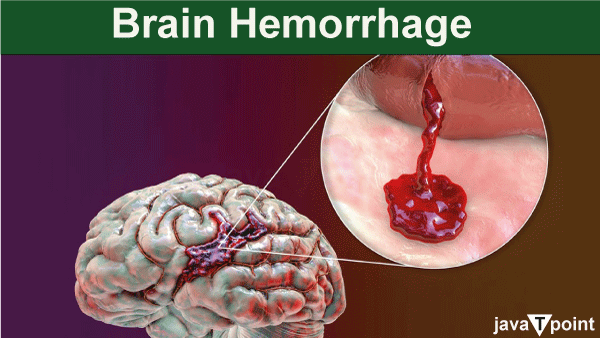Brain Haemorrhage SymptomsWhen there is bleeding inside or around the brain, it is called a brain haemorrhage. A stroke of that kind. Brain haemorrhage can be caused by high blood pressure (hypertension), abnormally weak or dilated (aneurysm) blood vessels that burst, drug addiction, and trauma. Stroke symptoms, such as weakness on one side of the body, difficulty speaking, or numbness, are prevalent in persons who have brain haemorrhages. A common sign is difficulty completing regular activities such as walking or even falling. Haemorrhagic strokes, or strokes caused by bleeding into the brain, account for around 13% of all strokes. 
Where a brain haemorrhage occurs in the brain is commonly used to categorise it. An intracranial haemorrhage is defined as bleeding anywhere inside the skull. A type of bleeding that happens within the brain is known as intracerebral haemorrhage. When there is bleeding between the brain's covering and the brain tissue itself, a subarachnoid haemorrhage occurs. A blood clot between the skull and the brain is known as a subdural or epidural hematoma, depending on whether it is below or above the brain's protective covering (dura). Subdural and epidural hematomas are more common after a serious head injury or a fall and will not be covered in depth here. It is critical to understand that when bleeding happens within the brain, headache may not appear because our brains lack the ability to detect the continuous disturbance. The brain's coverings (meninges) are extremely sensitive, and when bleeding occurs there, such as when an aneurysm ruptures, a sudden and severe headache is a common stroke symptom. What Causes a Brain Bleed?Elevated blood pressure is the most prevalent cause of a brain haemorrhage. High blood pressure can cause arterial walls to deteriorate and burst over time. When this occurs, blood accumulates in the brain, resulting in stroke symptoms. Another source of haemorrhage is an aneurysm, which is a weak point in the wall of an artery that expands out and may rupture. AVMs are irregular connections between arteries and veins that are normally present from birth and can cause brain haemorrhage later in life. In some cases, people with cancer who have had distant spread of their primary cancer to their brain (metastatic disease) may develop brain haemorrhages in the areas of the brain where the cancer has spread. Amyloid protein accumulation along blood vessels in the elderly can cause the artery wall to weaken, resulting in a hemorrhagic stroke. Cocaine or drug use can induce blood vessel damage and brain bleeding. Some prescription medications may also raise the risk of brain haemorrhage. Causes of Brain HaemorrhageAlthough all blood vessels can bleed, bleeding from arteries or veins in the brain is unusual. There is frequently a triggering element when it occurs. The following are some of the common causes of brain bleeds: -
Symptoms of Brain HaemorrhageA brain haemorrhage can induce a variety of symptoms. These symptoms may include tingling, weakness, numbness, or facial, arm, or limb paralysis. This is more likely to occur on one side of the body.
ComplicationA brain haemorrhage frequently leads to complications. The bleeding stops nerve cells from connecting with other regions of the body and functioning normally. Movement, speech, and memory impairments are all common after a brain haemorrhage. Depending on the location of the haemorrhage and the damage that ensues, certain repercussions may be permanent like-
Next TopicBrain Parts and Functions
|
 For Videos Join Our Youtube Channel: Join Now
For Videos Join Our Youtube Channel: Join Now
Feedback
- Send your Feedback to [email protected]
Help Others, Please Share









